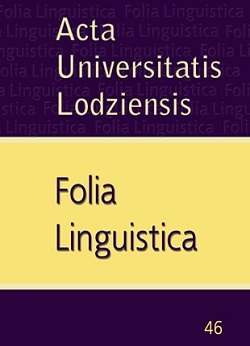Kontaminacje jedno- i wielowęzłowe w nagłówkach prasowych i komunikatach reklamowych
Portmanteau words in press headlines and advertising slogans
Author(s): Katarzyna BurskaSubject(s): Media studies, Marketing / Advertising
Published by: Wydawnictwo Uniwersytetu Łódzkiego
Summary/Abstract: In recent years, portmanteau words have become very popular linguistic phenomena in press headlines and advertising slogans. This research focuses on wordplay in headlines from daily newspapers, weekly and monthly magazines and advertising texts. The author discusses which words can blend and tries to answer the question what functions portmanteau words perform in contemporary media texts. The main aim of this article is an analysis of portmanteau words which occur in initial (e.g. mękamatyka combines the word męka with the word matematyka), middle (e.g. Billary combines the name Bill with the name Hillary) and final sounds (e.g. WIELKAMOC combines the word Wielkanoc with the word moc) of words. Portmanteau words can have one (e.g. fordyfikacja, tamby-lec, Motylia) or more common parts (eurogadament, wyLOTynki, archeostrady). Portmanteau words play an important role in media texts nowadays. The basic purpose of using them in headlines and advertising slogans is to encourage/persuade recipients to read an article or buy an advertised product. Sometimes portmanteau words are used to call new products or phenomena. Very often portmanteau words are sources of humour, which allows building close relations between the sender and the receiver. These neologisms help to attract the recipient’s attention and express the author’s emotional attitude to the entities described. They can communicate to readers or customers the possibility of double reading of headlines and slogans, expand or restrict information, and convey positive or negative meanings. They are often used to bond with the receiver. Furthermore, using portmanteau words testify to “economy trends” in a language.
Journal: Acta Universitatis Lodziensis. Folia Linguistica
- Issue Year: 2012
- Issue No: 46
- Page Range: 42-52
- Page Count: 11
- Language: Polish

